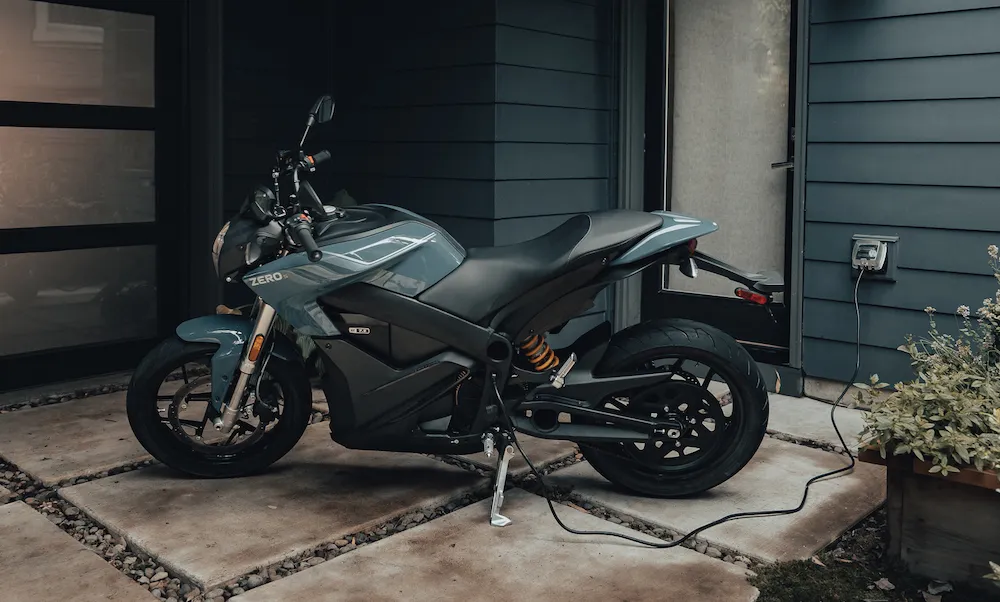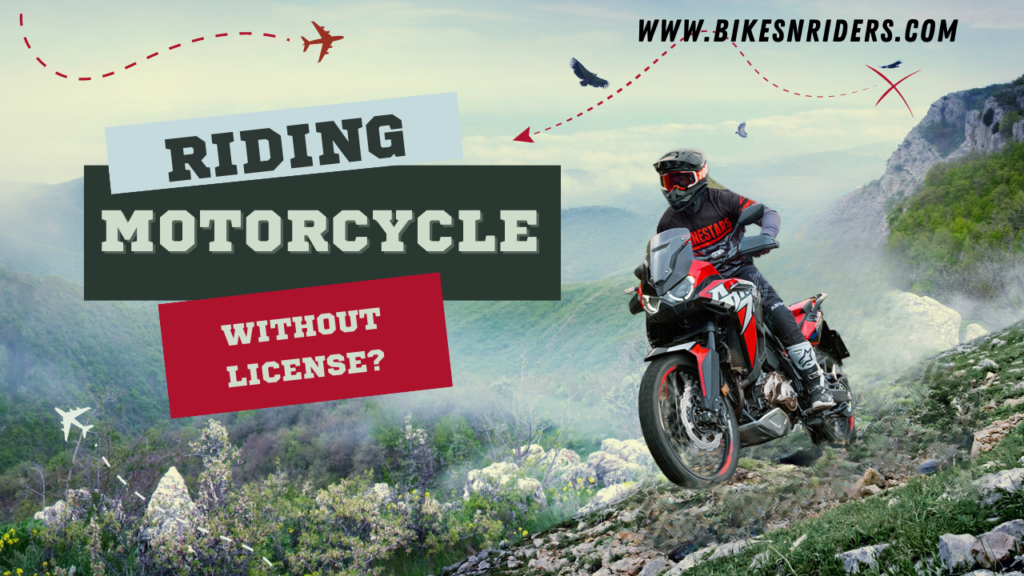Electric motorcycles have been gaining popularity in recent years, with more and more people considering them as a practical and eco-friendly transportation option. However, before you hit the road on your electric motorcycle, you might be wondering whether you need a license to ride one.
The answer depends on various factors, such as your location, age, and the power of your electric bike. In this article, we’ll explore the different requirements for riding an electric motorcycle and help you figure out whether you need a license to do so.
Whether you’re a seasoned rider or a beginner, it’s important to understand the licensing regulations for electric motorcycles to ensure your safety and legal compliance on the road.

Is a license required for riding an electric motorcycle?
Yes, in most places you do need a license to drive an electric motorcycle. This is because electric motorcycles are still considered motor vehicles, and the laws and regulations around operating motor vehicles still apply. The type of license you need will depend on the specific laws in your area and the classification of the electric motorcycle. Some electric motorcycles may fall under the same category as traditional bicycles, which do not require a license to operate. However, if the electric motorcycle has a motor that exceeds a certain power output or maximum speed, it may require a license to operate. Additionally, some areas may require specific classes of motorcycle licenses for electric motorcycles above a certain power output. It is important to research the laws and regulations in your area to determine if a license is required to operate an electric motorcycle and what type of license is necessary. Failure to properly license and register an electric motorcycle can result in fines and penalties.
Read this article to understand the consequences of Riding Motorcycle without License
What type of license is required for riding an electric motorcycle?
A Class M1 license is required to operate any type of electric motorcycle. This includes any bike that has an equivalent of over 150cc horsepower, as well as electric mopeds and scooters. Motorcycles that fall into this category must meet certain safety standards such as antilock brakes, full-coverage helmets, and properly working lights and horn. For those who are not familiar with driving an electric motorcycle the Department of Motor Vehicles provides classes on the subject which can help you learn how to safely drive and maintain your specific model.
On the other hand, a Class M2 license allows riders to operate smaller motorized vehicles such as mopeds and scooters. These bikes do not have to meet all of the same safety standards as with a full-powered electric motorcycle, but they should still be properly maintained for road safety. A moped or scooter can reach speeds up to 30mph so it is important to make sure you are comfortable operating such a vehicle before attempting to do so. A valid driver’s license is also needed in order to legally ride an electric motorcycle or moped/scooter so it is important to check with your local DMV for updates on the laws regarding these vehicles in your state
What is the process for obtaining a license for an electric motorcycle?
Once you’ve determined that you are indeed eligible for a motorcycle license, the next step is to learn the skills required to operate an electric motorcycle safely. Depending on where you live, you may need to sign up for and attend a rider education program certified by the Motorcycle Safety Foundation.
This course will demonstrate how to properly practice safety when riding your bike, including how to adjust seating positions, manage turns and curves, brake correctly and take necessary safety precautions while using the roadways. After attending this course and passing an examination at its completion, you will be issued with a learner’s permit which allows you to legally operate your electric motorcycle under certain stipulations.
In addition to gaining the proper credentials through courses, it is wise to thoroughly research the state’s laws regarding riding electric motorcycles as some states have specific regulations in place. You may also need additional insurance beyond what is required for traditional motorcycles.
After taking all these steps into account and making sure you have met all requirements according to your state’s laws, you can finally begin the process of acquiring your full license. Completion of driver’s training tests is necessary before getting approved for exams and ultimately receiving your license, so make sure you are well prepared beforehand if possible.
What are the recommended steps to take after obtaining a motorcycle license?
After obtaining your motorcycle license, there are several steps to take to ensure safe and responsible riding. It is important to continue improving your skills and knowledge as a rider.
First, purchase motorcycle insurance to protect yourself and your vehicle. Check with different insurance providers to find the best coverage and rates.
Next, invest in proper riding gear, which includes a helmet, gloves, boots, and a riding jacket. Always wear the appropriate gear when riding to protect yourself in case of an accident.
Consider enrolling in an advanced riding course to improve your riding skills, especially if you feel unsure of certain maneuvers or techniques. You could also join a local riding group or club to meet other riders and gain valuable tips and insights.
Always conduct regular maintenance and safety checks on your motorcycle to ensure it is in good condition. Keep your license and registration up to date, and follow traffic laws and regulations.
Lastly, continue to educate yourself on motorcycle safety and stay vigilant on the road. Stay aware of your surroundings and keep a safe distance from other vehicles. With these steps, you can enjoy safe and responsible motorcycle riding.
Which electric motorcycles can I ride without a license?
In most countries, riding an electric motorcycle without a license is strictly prohibited. However, some jurisdictions have regulations that allow certain models to be ridden without a license. For instance, in the US, some states allow riders to operate electric bikes with a maximum speed of 20 miles per hour without a license, while others require the rider to have a Class 3 electric bike license.
Electric motorcycles, on the other hand, generally require a license regardless of their top speed. In some cases, riders can acquire a special license that allows them to operate a motorcycle with pedals, but strict regulations still apply.
It’s important to note that just because a license might not be required, safety gear, insurance, and registration are still necessary. Always research and understand the laws and regulations in your jurisdiction before operating any type of motorized vehicle, including electric motorcycles. Ultimately, investing in proper training and obtaining the necessary license is the best way to ensure your safety and the safety of others while riding an electric motorcycle.
What are the differences in electric motorcycle licensing requirements across different states?
Electric motorcycle licenses differ from state to state in the US. Some states require a specialized electric motorcycle license, while others classify electric motorcycles in the same category as traditional gas-powered motorcycles. Some states require only a basic motorcycle license, while others require additional safety training programs before obtaining an electric motorcycle license. It is important to check with your state’s Department of Motor Vehicles (DMV) for specific requirements. Additionally, some states may have specific regulations for registering and insuring electric motorcycles.
E-Bike Categories
E-bikes are classified into three categories: Class 1 e-bikes are pedal-assist only and have a maximum speed of 20 mph, Class 2 e-bikes have a throttle and a maximum speed of 20 mph, and Class 3 e-bikes have a maximum speed of 28 mph and require a helmet.
Class 1
A Class 1 electric bicycle, also known as a pedal-assisted electric bicycle, does not require a license or registration to ride on public roads in most countries. These bikes have a maximum speed of 20 mph and an electric motor with a power output of 750 watts or less. However, it may be subject to certain state and local laws, such as helmet requirements, age restrictions, and restrictions on where they can be ridden. Overall, Class 1 electric bicycles are an accessible and convenient mode of transportation for those looking for a eco-friendly and cost-effective alternative to traditional bikes.
Class 2
In terms of motorcycle licensing laws, Class 2 refers to a type of vehicle that includes electric motorcycles with a maximum speed of 50 km/h. Riders of Class 2 electric motorcycles are required to have a valid motorcycle license or a Class 5 driver’s license with a motorcycle endorsement. In some regions, completing a motorcycle safety training program and obtaining a certificate of completion may also be necessary. It is important to note that different regions may have varying laws and regulations regarding Class 2 electric motorcycles, so it is important to check with local authorities before riding.
Class 3
Class 3 electric bicycles are a type of motorized bicycle that can reach speeds of up to 28 mph. They are classified as electric bikes, so they do not require a motorcycle license in most states. However, it is essential to check with your local DMV to see if any additional licensing or registration is necessary. Always be sure to wear a helmet, observe traffic laws, and follow safety guidelines when riding any type of bicycle or electric vehicle. Overall, Class 3 e-bikes are an excellent option for those looking for an eco-friendly and convenient way to commute or enjoy leisurely rides.
FAQ
Is insurance required for an E-bike?
While not required by law in many places, it is highly recommended to have insurance for your e-bike. In the event of an accident or theft, insurance can provide financial protection and peace of mind. Some homeowner’s insurance policies may cover e-bikes, but it’s important to check with your insurance provider to ensure you have adequate coverage. Additionally, some manufacturers offer insurance plans specifically for e-bikes. It’s always better to err on the side of caution and make sure your investment is protected.
What is the age requirement for riding an e-bike?
In most places, there is no age requirement for riding an e-bike. However, some areas may have specific rules for young riders or may require a minimum age for certain types of e-bikes. It’s important to check local regulations and laws before riding an e-bike, regardless of age. Additionally, wearing a helmet and taking safety precautions is always recommended.
Is it mandatory to wear a helmet while riding an e-bike?
In most states and provinces, electric bicycle riders are not required to wear helmets as long as their e-bikes meet specific criteria, such as being limited to a certain speed. However, it’s always recommended that riders wear helmets to ensure their safety in the event of an accident. It’s important to check local regulations to determine helmet requirements in your area.
Conclusion
Owning an electric motorcycle can be a great alternative for commuting or leisure riding. However, it’s crucial to remember that it is a motor vehicle and requires proper documentation and precautions, including a license, registration, and insurance.
While the specific requirements may vary from state to state, it’s essential to familiarize yourself with your local laws and regulations around motorized vehicles. Without proper documentation, you could be facing fines or even legal consequences if involved in an accident or pulled over by law enforcement.
Additionally, obtaining proper training and safety equipment, such as a motorcycle helmet, can help reduce the risk of accidents and injuries. Riding an electric motorcycle can be an enjoyable and eco-friendly way to get around, but it’s crucial to do so responsibly and with proper documentation.

